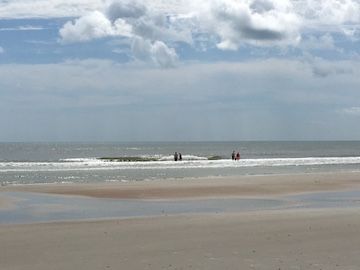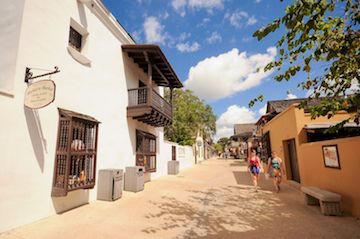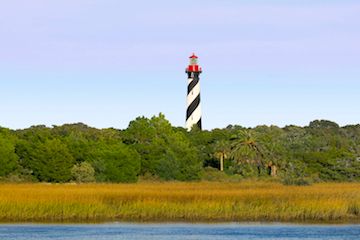St. Augustine: Your Beach Vacation Guide
St. Augustine, Florida, makes for an ideal summer vacation destination for two reasons. The first, it's 20 miles of beaches. The second, St. Augustine, America's oldest continually inhabited European settlement, boasts an ample number of historic sites. Here's what to do while you're in town.

Anastasia State Park in St. Augustine, Florida. Image Source: C.H. Stapen
Come to the St. Augustine area for its 20 miles of beaches and take time off the sand to discover the area’s history. Settled in 1565 by Spanish explorers, St. Augustine claims fame as America’s oldest, continually inhabited European settlement. The region offers a laid-back, moderately priced sea and sand getaway with a plateful of good restaurants and a side of history. Follow these suggestions for what to see and do.
BEACHES
St. Augustine Beach
A wide swath of soft sands, the beach attracts more families and couples than keg-party college students. Most lodgings and eateries don’t edge the shore — although a beachfront Embassy Suites is being constructed. Cafes and hotels, most of them low-rise, line A 1A Beach Boulevard, the road that parallels the ocean, one block from the beach.
Anastasia State Park
Campers and day visitors haul coolers and chairs to Anastasia State Park, a few miles north of St. Augustine Beach. The dune-bordered beach is wide, especially at low tide. The beach stretches for 5 miles. The park allows shore fishing and bicycling on the sand, best at low tide. The Island Beach Shop & Grill rents bicycles, beach umbrellas and chairs and sells sundries and snacks.

St. George Street in St. Augustine, Florida. Image Source: Florida Historic Coast
HISTORIC SITES
Castillo de San Marco
The Spanish began construction on Castillo de San Marco, in 1672. Completed in 1695, the fort, held later by the British and the United States, overlooks St. Augustine’s Matanzas Bay, and is the oldest masonry fort in the continental U.S. Browse the exhibits, watch the film on loading a cannon, and take in the panoramic city and water views from the gun deck.

St. Augustine Lighthouse in St. Augustine, Florida. Image Source: Florida Historic Coast
Lighthouse
Completed in 1874, the St. Augustine Lighthouse, a white structure with a thick ribbon of black spiraling down the tower, still serves St. Augustine, although now the light is automated. Climb the 219 stairs for a sweeping view. The Victorian-furnished keeper’s house is also open for visitors.
St. Augustine Historic Area
The city has a long and lively history. Although, for our tastes, we found much in the historic district to be kitschy, there are gems. Don’t miss the fort. Stroll the St. George Street pedestrian mall for its cafes, restaurants, shops and historic attractions. Old Town Trolley Tours of St. Augustine offers a 23-stop, hop-on, hop-off tour with free parking, historic tidbits and transportation to different sites.

The seafood paella at Columbia Restaurant in St. Augustine, Florida. Image Source: C.H. Stapen
RESTAURANTS
Columbia
The first Columbia eatery opened in Tampa in 1905. Now the family-owned and operated chain offers very good Spanish fare in seven Florida areas, including St. Augustine’s historic district. Try the paella.
Harry’s Seafood Bar and Grille
Harry’s, located St. Augustine’s historic area, serves such New Orleans inspired cuisine as blackened red fish and Louisiana fondue.
Terra & Aqua
Even though the restaurant is located in a small, somewhat empty shopping center in St. Augustine, persevere. Terra & Aqua offers a contemporary industrial look and modern Italian cuisine that includes pizza, pork chops, chicken and seafood.
For more information
Contact Florida’s Historic Coast.
Discover more Dentist’s Money Digest lifestyle coverage here.
Follow Candyce H. Stapen on Twitter: @FamilyiTrips
ACTIVA BioACTIVE Bulk Flow Marks Pulpdent’s First Major Product Release in 4 Years
December 12th 2024Next-generation bulk-fill dental restorative raises the standard of care for bulk-fill procedures by providing natural remineralization support, while also overcoming current bulk-fill limitations.